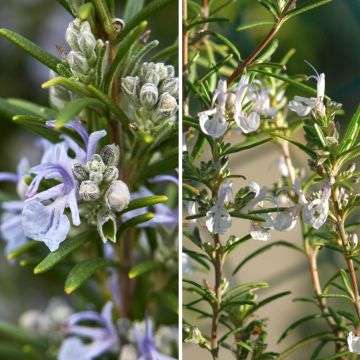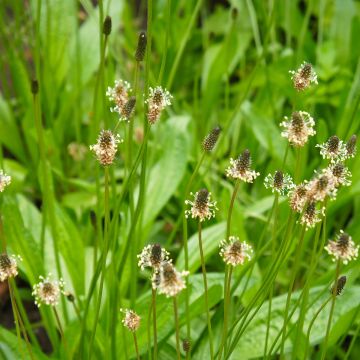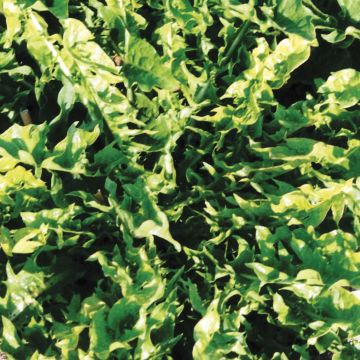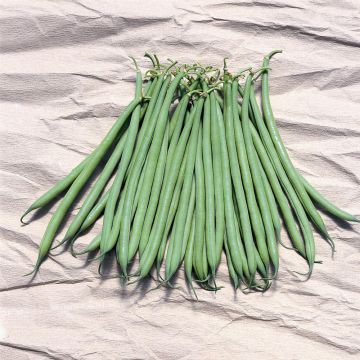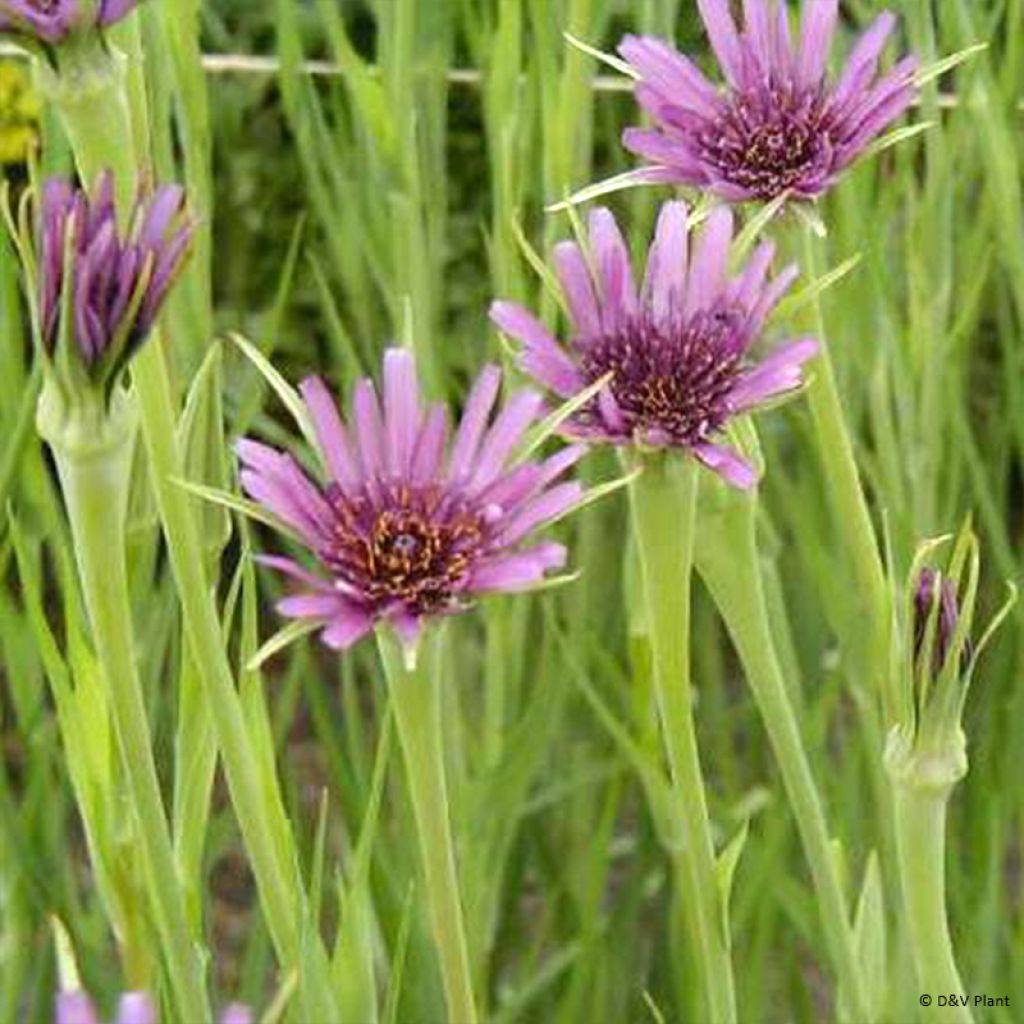

Salsifis cultivé - Tragopogon porrifolius
Tragopogon porrifolius - Salsify
Tragopogon porrifolius
Salsify, Oyster Plant, oyster root, Purple Goat's Beard, Vegetable Oyster, Jerusalem Star
Special offer!
Receive a €20 voucher for any order over €90 (excluding delivery costs, credit notes, and plastic-free options)!
1- Add your favorite plants to your cart.
2- Once you have reached €90, confirm your order (you can even choose the delivery date!).
3- As soon as your order is shipped, you will receive an email containing your voucher code, valid for 3 months (90 days).
Your voucher is unique and can only be used once, for any order with a minimum value of €20, excluding delivery costs.
Can be combined with other current offers, non-divisible and non-refundable.
Why not try an alternative variety in stock?
View all →This plant carries a 6 months recovery warranty
More information
We guarantee the quality of our plants for a full growing cycle, and will replace at our expense any plant that fails to recover under normal climatic and planting conditions.
Description
Cultivated Salsify, in Latin Tragopogon porrifolius, is a biennial plant cultivated for its pale yellow-white root. It is part of the ancient and forgotten vegetables, as its cousin the black-rooted scorzonera has replaced it in market gardening. The salsify root measures about 20 cm (8in) long. Its white flesh, with a slightly sweet flavour, can be enjoyed cooked, au gratin, sliced with mayonnaise, in béchamel sauce, or as an accompaniment to meat or fish. You should plant it in spring for a harvest from October to April.
Cultivated Salsify belongs to the Asteraceae family. The plant can reach a height of 1 m (3ft). Its leaves resemble those of leeks. The flowering takes the form of discreet inflorescences, in heads, grouping violet flowers. Each head is surrounded by 5 to 12 long green bracts.
It is a vegetable with a slightly sweet flavour, which is somewhat similar to that of artichoke, so you will enjoy rediscovering it in the garden to enjoy it freshly harvested. It can be prepared in multiple ways: children generally like it with béchamel sauce, but you can also eat it cold, with a sauce made from sour cream. Its young leaves can also be consumed, they are excellent fresh, in salads.
Salsify is a very good source of fibre and minerals, it contains inulin, an indigestible sugar, and its calorie value is low.
In the garden, salsify thrives in sunny, fairly rich, fresh, deep, and well-tilled soil.
Harvest: it is done 5 to 7 months after sowing, as needed (they can be kept in the ground) by digging them up with a spade.
Storage: salsify can be stored for a few days in a cool place, wrapped in paper towels. They can be frozen after being blanched for a few minutes in boiling water. They can also be kept in a cellar for a few months, buried in sand.
The gardener's little trick: regularly weed and hoe, and cut the flower stems as soon as they appear.
Report an error about the product description
Harvest
Plant habit
Foliage
Other Vegetable garden A to Z
View all →Planting and care
Salsify thrives in sunny, fairly rich soil that is slightly moist, deep, and well-tilled.
Maintenance
Weed and water regularly.
To sow cultivated salsify:
Sow the seeds thinly in well-prepared soil, spaced 25 cm (10in) apart. It is advisable to cover the seeds with half a centimetre of compost or fine soil. Gently firm down with the back of a rake and water with a fine spray. Keep sufficiently moist until germination, which can take 20 days. To improve germination, you can cover your sowings with a light herb mulch that you will remove after complete germination.
Cultivation
Care
Intended location
This item has not been reviewed yet - be the first to leave a review about it.
Similar products
Haven't found what you were looking for?
Hardiness is the lowest winter temperature a plant can endure without suffering serious damage or even dying. However, hardiness is affected by location (a sheltered area, such as a patio), protection (winter cover) and soil type (hardiness is improved by well-drained soil).

Photo Sharing Terms & Conditions
In order to encourage gardeners to interact and share their experiences, Promesse de fleurs offers various media enabling content to be uploaded onto its Site - in particular via the ‘Photo sharing’ module.
The User agrees to refrain from:
- Posting any content that is illegal, prejudicial, insulting, racist, inciteful to hatred, revisionist, contrary to public decency, that infringes on privacy or on the privacy rights of third parties, in particular the publicity rights of persons and goods, intellectual property rights, or the right to privacy.
- Submitting content on behalf of a third party;
- Impersonate the identity of a third party and/or publish any personal information about a third party;
In general, the User undertakes to refrain from any unethical behaviour.
All Content (in particular text, comments, files, images, photos, videos, creative works, etc.), which may be subject to property or intellectual property rights, image or other private rights, shall remain the property of the User, subject to the limited rights granted by the terms of the licence granted by Promesse de fleurs as stated below. Users are at liberty to publish or not to publish such Content on the Site, notably via the ‘Photo Sharing’ facility, and accept that this Content shall be made public and freely accessible, notably on the Internet.
Users further acknowledge, undertake to have ,and guarantee that they hold all necessary rights and permissions to publish such material on the Site, in particular with regard to the legislation in force pertaining to any privacy, property, intellectual property, image, or contractual rights, or rights of any other nature. By publishing such Content on the Site, Users acknowledge accepting full liability as publishers of the Content within the meaning of the law, and grant Promesse de fleurs, free of charge, an inclusive, worldwide licence for the said Content for the entire duration of its publication, including all reproduction, representation, up/downloading, displaying, performing, transmission, and storage rights.
Users also grant permission for their name to be linked to the Content and accept that this link may not always be made available.
By engaging in posting material, Users consent to their Content becoming automatically accessible on the Internet, in particular on other sites and/or blogs and/or web pages of the Promesse de fleurs site, including in particular social pages and the Promesse de fleurs catalogue.
Users may secure the removal of entrusted content free of charge by issuing a simple request via our contact form.
The flowering period indicated on our website applies to countries and regions located in USDA zone 8 (France, the United Kingdom, Ireland, the Netherlands, etc.)
It will vary according to where you live:
- In zones 9 to 10 (Italy, Spain, Greece, etc.), flowering will occur about 2 to 4 weeks earlier.
- In zones 6 to 7 (Germany, Poland, Slovenia, and lower mountainous regions), flowering will be delayed by 2 to 3 weeks.
- In zone 5 (Central Europe, Scandinavia), blooming will be delayed by 3 to 5 weeks.
In temperate climates, pruning of spring-flowering shrubs (forsythia, spireas, etc.) should be done just after flowering.
Pruning of summer-flowering shrubs (Indian Lilac, Perovskia, etc.) can be done in winter or spring.
In cold regions as well as with frost-sensitive plants, avoid pruning too early when severe frosts may still occur.
The planting period indicated on our website applies to countries and regions located in USDA zone 8 (France, United Kingdom, Ireland, Netherlands).
It will vary according to where you live:
- In Mediterranean zones (Marseille, Madrid, Milan, etc.), autumn and winter are the best planting periods.
- In continental zones (Strasbourg, Munich, Vienna, etc.), delay planting by 2 to 3 weeks in spring and bring it forward by 2 to 4 weeks in autumn.
- In mountainous regions (the Alps, Pyrenees, Carpathians, etc.), it is best to plant in late spring (May-June) or late summer (August-September).
The harvesting period indicated on our website applies to countries and regions in USDA zone 8 (France, England, Ireland, the Netherlands).
In colder areas (Scandinavia, Poland, Austria...) fruit and vegetable harvests are likely to be delayed by 3-4 weeks.
In warmer areas (Italy, Spain, Greece, etc.), harvesting will probably take place earlier, depending on weather conditions.
The sowing periods indicated on our website apply to countries and regions within USDA Zone 8 (France, UK, Ireland, Netherlands).
In colder areas (Scandinavia, Poland, Austria...), delay any outdoor sowing by 3-4 weeks, or sow under glass.
In warmer climes (Italy, Spain, Greece, etc.), bring outdoor sowing forward by a few weeks.






























